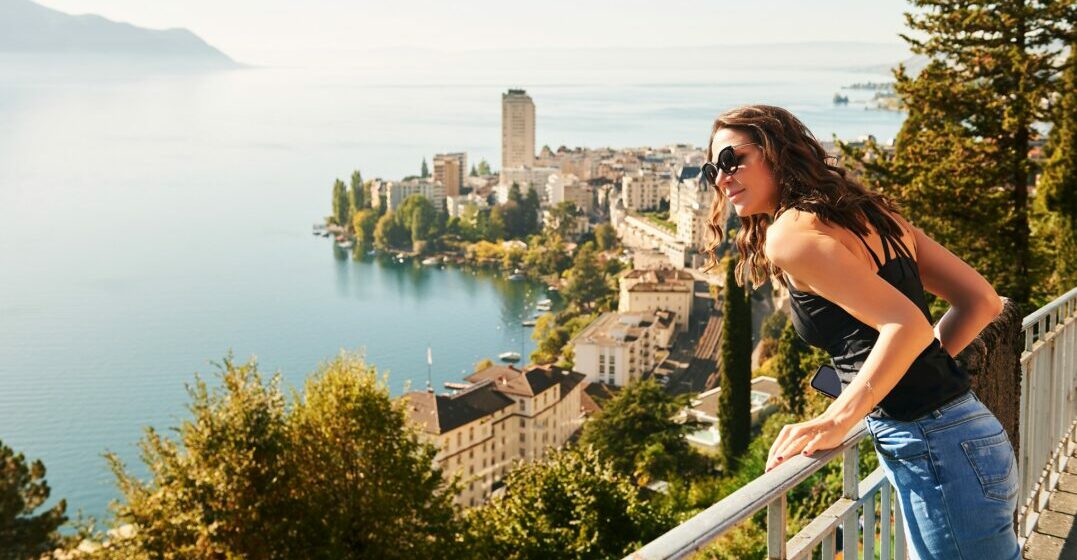by Laura Jones
Updated on January 8, 2024
You probably know that Switzerland is divided into cantons but you might not know how many cantons there are in Switzerland or what a canton actually does. Well, there are 26 Swiss cantons and they have responsibility for everything that isn’t covered by the federal government. And that’s quite a lot. In this article, we’re going to look at seven regions of Switzerland and talk about the cantons in each of them. So, are you ready to learn more about the cantons of Switzerland?
A canton is an administrative division. In Switzerland, t’s similar to a US state or a German Bundesland. Each canton manages education, healthcare, social welfare, law enforcement and direct taxation, and each has a capital city and its own official language. The official languages include German, French, Italian and Romansch but only four of the cantons have more than one official language. Swiss citizens are far more likely to interact with their canton than the federal government.
The first Swiss region and canton we’re looking at is Zürich. While not the biggest canton geographically, it does have the largest population with about 1.5 million inhabitants. Zürich is famous for being the economic center of Switzerland but it also has delightful nature, centered around Lake Zürich, and a charming Old Town. Make no mistake, the cost of living in such a lovely city is high, but many expats think it’s worth it. The official language is German.
There are seven cantons in the region of Eastern Switzerland, including the largest canton geographically, Graubünden. Many of the cantons in Eastern Switzerland have dramatic mountain scenery, including Graubünden, Glarus, Appenzell Ausserrhoden and Appenzell Innerrhoden. Thurgau and Sankt Gallen both border scenic Lake Constance and in Schaffhausen, you can find the famous Rhine Falls. All of the cantons in Eastern Switzerland have German as an official language but Graubünden is unique, in that it is the only Swiss canton to have three official languages: German, Italian and Romansch.
The third region is the région lémanique. From its name, you might be able to guess that the cantons here are mainly French-speaking, though Valais also has German as an official language. The canton of Geneva is most famous for its capital city, Geneva, which is home to the headquarters of the United Nations and the Red Cross. Valais is one of the most picturesque cantons and it’s where you’ll be able to see the iconic Matterhorn among other mountains that reach over 4,000 meters in height. Vaud is mountainous too, but its main attraction is that it borders the shore of Lake Geneva.
In Northwestern Switzerland, there are three cantons: Basel-Stadt, Basel-Landschaft, and Aargau. In these cantons, you’ll find Switzerland’s cultural capital, Basel, which has almost 40 museums and a lovely Old Town to stroll through. The region also has many medieval castles, rivers and excellent hiking trails. The official language in all of these cantons is German.
Bern, in Espace Mittelland, is the capital of the canton of Bern and of all of Switzerland and it’s culturally rich and scenically divine. It’s full of museums, including the Zentrum Paul Klee and on its cobbled streets, there are over six kilometers of covered shopping arcades. Other cantons in this region are Solothurn, with its Baroque capital of the same name, and the heavily forested Jura, where you can do lots of outdoor activities. Head to the canton of Fribourg for its delicious cheese and pop into the canton of Neuchâtel to laze on the shores of lovely Lake Neuchâtel in the summer months. This region has a mix of official languages: Bern and Fribourg speak French and German, Jura and Neuchâtel French and Solothurn speaks German.
Lucerne is probably the most famous canton in this region, known for the beautiful city of the same name, where you’ll find a colorful Old Town alongside stunning Lake Lucerne with Mount Pilatus towering over. The canton of Schwyz gave Switzerland its name and the cantons of Nidwalden and Uri were both founding members of the Swiss Confederation — all great claims to fame. Zug is home to two large lakes, Zug and Ägeri, while the canton of Obwalden is full of rolling forests. German is the official language in all of these cantons.
Switzerland’s southernmost canton, Ticino is the only canton where Italian is the only official language. The climate feels Mediterranean on the shores of Lake Maggiore but the area’s peaks offer a cool high Alpine climate more in keeping with our stereotypical idea of Switzerland. This canton is cut off from the Swiss Plateau by the Alps and the combination of Italian speakers and Italianate architecture makes it feel like a distinct part of the country.
To get a real idea of how diverse Switzerland is in terms of landscape, languages and cities, the best way is to visit several of the different cantons. Start in the economic capital of Zürich and then spend some time in the south, visiting rugged Graubünden and relaxing Ticino. For a taste of French-speaking Switzerland, check out glorious Geneva and the towering mountains of Valais.
